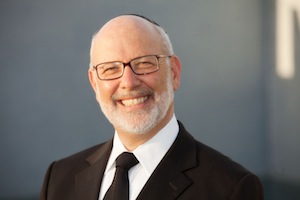The information age is over. The post-digital age or, what Daniel H. Pink[1]calls “the Conceptual Age”, has begun. Conventional educational models cannot adequately prepare our minds and those of our children for this new age. (Refer to http://www.iawaken.org/shiurim/view.asp?id=6577 for a more detailed explanation of why not.) Paradoxically, Torah is the learning tool more suited than any other to mold the minds of people who will lead in this post-digital era.
Children raised in the digital era think differently from the rest of us[2]. In fact their brains may even be “wired” differently as a result of the way they experience reality and manage information[3]. The result is that “linear thought processes that dominate educational systems now, can actually retard learning for brains developed through game and Web-surfing processes on the computer[4].
Here are some of the keys to the way the new generation thinks.
- Their thinking is exponential rather than linear.
- They hold can hold onto parallel thought structures and process them simultaneously.
- They make connections by hyper-link.
- Using right brain skills, they recognize patterns and interpret them.
- They learn interactively.
This type of thinking is precisely the same as the cognitive structure of Gemorra and is the reason why so many people educated in the finest secular linear thinking, have always found it so hard to masterGemorra logic.
For an example, take a look at the first piece of Gemorra inMassechet Sotah (current Daf Yomi Masechet) based on our Parsha. The Gemorrah queries the sequence of four Masechtot (Talmudic tractates): Ketuvot (dealing with contractual arrangements between husband and wife and other aspects of marital relationship), Nedarim(Oaths), Nazir, and Sota; all included in the Seder (one of the six sections of the Talmud) of Nashim (Wives).
The Gemorra explains the sequence in the following, seemingly absurd way:
The seventh Chapter of Ketuvot is called “Hamadir” (One who takes an oath precluding his wife from benefiting from him). So, Masechet Nedarim (Oaths) follows Ketuvot although from a contextual perspective it could well be placed elsewhere. Nazir really belongs inSeder Kodshim, but since Nezirut is initiated with an oath, it followsNedarim. Sotah comes after Nazir for the same reason that Nazircomes after Sotah in our Parsha: Because we are taught, that if a person observes the disgrace of a Sotah he should become a Nazir. The reason is that alcohol causes lightheadedness, which in turn can cause men and women to conduct themselves inappropriately. This could lead to a Sotah situation. Therefore, one who observes aSotah should undertake to be a Nazir in order to become mindful of the role that wine may have played in her disgrace.
Don’t worry if you didn’t get that. Only under twenty-five year olds who think digitally, or Talmudic scholars get it the first time around! Let’s unpack the steps:
The Hyper-Link
There is a key chapter-heading in Ketuvot: “Hamadir”. Imagine it as a hyper-linked text. If you wanted to know more about the concept ofNeder, you would click on that Chapter heading. It would take you toNedarim, placed for that reason, right after Ketuvot. From a linear perspective the sequence is absurd. As a hyper-link connection, the sequence is obvious.
Exponential Expansion
Nedddarim does not lead you to Nazir by hyper-link or linear logic.Nazir ought to be placed in Seder Kodshim. It is only when you think of oaths in an exponential way that you expand into the unique elements of a Nazarite oath.
Holding Parallel Ideas
All of this takes place within Seder Nashim (Wives). We hold theNashim idea in our minds in parallel with Neddarim and Nazir even though they do not have much to do with women from a linear perspective.
Right Brain pattern Recognition
We then loop back to the theme of Nashim when we get to Sotah(The Adulterous Wife) right after Nazir. Sotah follows Nazir not because of any hyperlinking reason. Sotah follows Nazir because of an artistic image portraying the philosophic and ethical root-cause of improper inter-sexual conduct: lightheadedness often brought about by drinking alcohol.
The fact that according to this explanation Sotah should preceedNazir as it does in our Parsha and not the other way around as in theGemorra, is easy to understand when we see it as an artistic image rather than a linear sequence. In an image proximity is the key, not the sequence.
The Gemorra has used four different cognitive structures to explain the connections between four seemingly unrelated Talmudic tractates. This process, in just a few lines of Gemorra text, flexes our mental muscles in all the areas we are going to need to think in the Post-Digital Age. We are compelled to switch in and out of four different cognitive structures, none of them linear.
With regard to the fifth learning mode of the new generation, interactivity, the chavruta (interactively studying in pairs) methodology takes care of that too.
From an early age, our children learn the thinking skills necessary to succeed in any area of life in which they choose to engage. Sociologists worry that new generation children never slow down and reflect. This too is handled in a Torah education: Irrespective of how hectic an interactive study session is, when prayer time comes, students slow down almost to a standstill. They stand in silent attention with their feet together. They focus on words. They meditate. They reflect. They are mitpallel (in prayer).
Torah, more than any other study, is positioned to mold the minds of people who will lead in the post-digital era.
Notes:








